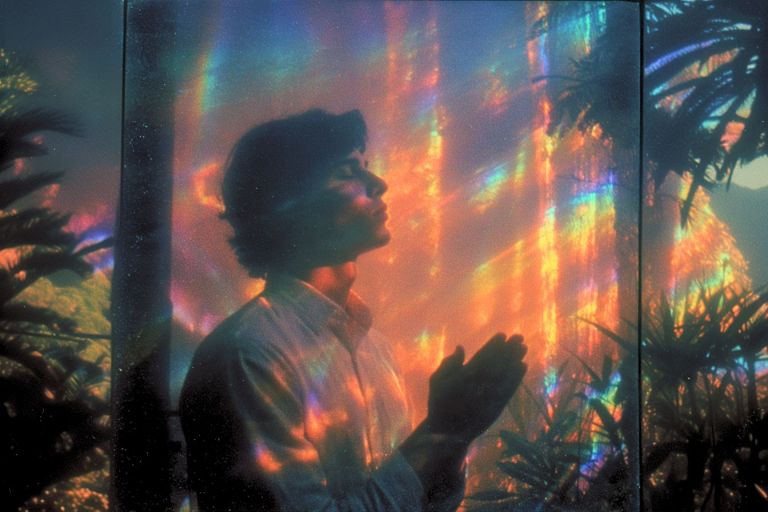
Uncomfortable Signs You Might Be Living With An Attachment Disorder (And How To Cope)
After an abundance of therapy sessions, I received a diagnosis: I had an attachment disorder. The three main types of attachment styles are secure, anxious, and avoidant. When someone is left feeling anything other than secure, the other styles can leave you in the midst of a complex and confusing state of being.

I remember growing up feeling safe, sound, and loved. I remember thinking nothing in the world could shatter my life, because I had people to count on. I had love, and no matter how bad things got, love would protect me.
I never stopped being loved, I know that now. I know that I will never stopped being loved, that there will always be someone out there who cares and is rooting for me. But I know this after years and years of feeling so alone, longing for people to love me, and yet hating them every time they tried.
Looking back now, I don’t think there was one thing that convinced me that I was too far gone to be loved. I don’t think there ever really is one thing to blame this sort of problem on. I think like with many things, it was created through the perfect storm of unfortunate events. But dwelling on the past has never once brought hope into my future, so I’m not going to go down that path.
All I know is one day I woke up and the vibrant colors that once paraded around my vision were faded into black and white. I remember feeling so distant from reality, so far away from people, and so unworthy of love. You see, when you are living with an attachment disorder, the one thing you long for most is the thing you push away the hardest.
The best way I can describe what it feels like is this: I was screaming at the top of my lungs for help, hope, and love and yet the moment it came near me I would do everything I could to keep it as far away as possible. People would try to love me and my actions would scream “I hate you” and as they finally started to back away my heart would whisper “please don’t leave me.”
After an abundance of therapy sessions, I received a diagnosis: I had an attachment disorder. There are several types of attachment styles, and if you do not develop a secure attachment you can form an attachment disorder. The three main types of attachment styles are secure, anxious, and avoidant. When someone is left feeling anything other than secure, the other styles can leave you in the midst of a complex, and confusing attachment disorder. Attachment style affects just about every aspect of life, with an emphasis on the way our relationships with others manifest themselves, and the level of health that is existing within our relationships. To put it simply, our attachment determines the way we view our self-worth which in turns affects the type of treatment we feel we deserve from others and the type of love we accept from them.
Those who are securely attached tend to have the healthiest relationships and be most satisfied overall with their quality of life. They offer support to others, and feel comfortable trusting others to support them. They are able to be honest, open, and self-reliant, while also feeling comfortable opening themselves up to others and receiving their love.
When it comes to anxious attachment, people tend to be so desperate for love that they begin to long for someone to come along and save or rescue them. While desperately wanting to feel loved by another, they simultaneously push them away.
Avoidant attached individuals come in two subcategories: dismissive and fearful. Those who are dismissive tend to isolate. They distance themselves from others and feel the need to rely on no one except themselves. However, this image of only needing themselves is but an illusion. Those who are fearfully avoidant live in a state of being afraid of getting too close to others yet also fearing being too far away. They are often emotionally overflowing. The person they rely on most for their safety is also the same person they fear closeness the most with, which in turn makes getting one’s relational needs met nearly impossible.
Thankfully, disposition of attachment styles does not equal the final destination of one’s attachment. Through therapy, self-awareness, and support of others attachment styles can be altered and worked through to create a healthy position.
Although one’s attachment style is incredibly important in the role of an attachment disorder, there is a little more to the picture. That is where love languages come in.
There are five identified love languages. These are touch, words of affirmation, quality time, gifts, and acts of service. Often times these are developed through the way we were raised and our attachment to our parents and family. Monkey see, monkey do. Mom and dad loved to hug? That becomes what we are comfortable with. They were always building you up with encouraging words? Then you tend to show that same love to others. Every Saturday night was family game night? You’re likely to carry that tradition over. Christmas and birthdays meant being showered with gifts? That makes you feel loved. Your dad was always volunteering to help your mom out around the house? You’ll probably look for the same thing in your future spouse.
But what happens when the language you speak love in is the same as your mom but different than your dad? Or what if the language of love you grew up receiving changes drastically when your parents get divorced? What if your future spouse loves gifts but all you want is to be told you’re beautiful? Whether we like it or not we all crave love and it is vital to our development at its inmost core. If we aren’t hearing love the way that it translates to our hearts and our minds then we can start to feel an insecure attachment. With the perfect collision of factors we can rapidly transpire into a realm where love just seems to be absent from us all together.
Love is a funny thing. It is a basic human need and we all must have it to grow. And yet, it’s not so easy to give or receive. Love breaths the same air but speaks many different languages. And the worst part is if we don’t understand our own language it makes it incredibly difficult to teach it to others. Trying to learn your own love language and then communicate a different one to others is like decoding brail when you didn’t even know that was a means of speaking.
But despite all this, we are not without hope. The creation of an attachment disorder is the product of a love deficiency- real or perceived. Thankfully, although love is complex and takes on several forms, it is abundant and plentiful. We tend to look for love in all the wrong places. We must first look for love within. The seed is already planted, we just have to let the sunshine come in through the cracks of our brokenness to illuminate our hearts and help that seed grow. Sometimes it feels impossible to start with loving ourselves though, and that is okay. Love is everywhere, and love will seep through those same cracks until it begins to heal the distance we have created between us and the love from others. The love will not back down, and soon enough we will become filled with it. Slowly but surely, we will receive the love and be able to shower others with it in return.
If you or anyone you know is struggling with an attachment disorder please know this: you or they are never too far gone. No matter how far you or your loved one has pushed others away, no matter how far away you yourself of the one you’re struggling to get through to feels from love, there is no such thing as being past the point of no return. Help is real. Hope is real. Love is real. And life without this aching pain is real. ![]()











